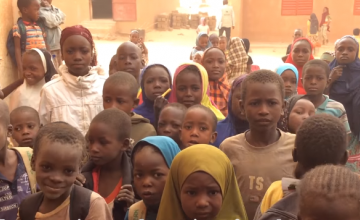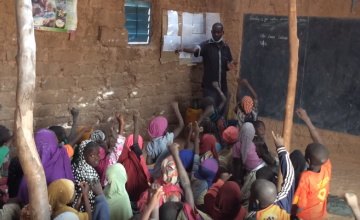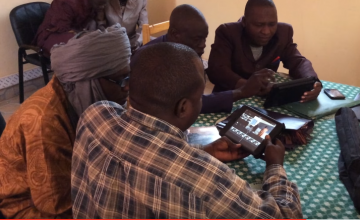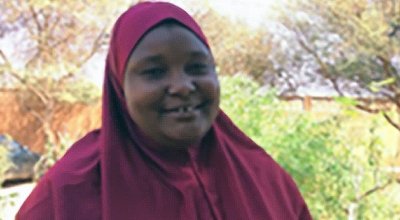
Read our 2023 annual report

Knowledge Hub
Technology in the classroom: reducing illiteracy in Niger

Concern’s innovative approach to improving literacy through technology is leading the way in Niger.
Niger is one of the world’s poorest countries with 43.6% of the population living on less than $1.25 a day. This land-locked country in the Sahel is facing a multitude of issues, including climate-related disasters, high population growth and gender inequality.
These factors have combined to create a lack of access to services such as quality education – leaving only 29% of the population of Niger with adequate literacy skills.

Education innovation
In response to the low literacy and general education levels in Niger, and with support from Irish Aid, the Stavros Niarchos Foundation and Turing Foundation, Concern launched the ‘Education Innovation’ programme. The aim is to improve the overall quality of education in Niger through the use of video technology. Specifically, the programme focuses on improving teaching practices through intensive teacher training with the aid of technology.
It is hoped that this new approach will empower teachers in rural Nigeria to create a safe, supportive and child-centred learning environment, leading to improved learning outcomes to students. The programme launched in January 2015 and thanks to the enthusiasm of teachers, it is already being used in classrooms in Niger.
So how does it all work?
Technology-enhanced training
Technology-enhanced teacher training is an integral component of the ‘Education Innovation’ programme. Rural teachers – who are mainly unqualified – receive training from specialised trainers for a number of weeks during the summer. During this time, each trainer is assigned a specific group or ‘cluster’ of rural teachers to work with. The teachers in training are filmed using their current teaching methods, allowing the trainers to later analyse their different approaches and identify steps for improvement.
After receiving this training and feedback, the teachers return to their own classrooms and have a follow-up visit from their trainer within a number of weeks. The trainers work with them in the classroom to help them apply strategies they learned during the summer. This will involve team-teaching and coaching sessions. Once a teacher is ready, the trainer then films them teaching in their own classroom, and afterwards, they review the video together on a mini projector.
This allows the teacher the opportunity to review and reflect on their performance in class. If they aren’t happy with the footage, it is immediately deleted by the trainer. This step is essential as trust-building is vital to the success of the programme.

Positive reinforcement
On returning from the field, all of the trainers meet to identify the strengths and weakness of the various teaching methods that have been recorded on video. They focus only on the positive aspects of the videos, editing them together to create relevant clips. Once these video clips are compiled, they are used in the next training to help teachers see real-life examples of good teaching strategy in practice.
Lightweight technology
The equipment used by trainers and rural teachers is light and compact but robust: an iPad mini is used for filming; iMovie is used to edit; an OtterBox protects the iPad from the harsh heat and dust of the desert; and a Pico projector is used for easy playback in the classroom.
So far, the reaction to this new approach has been overwhelmingly positive, with some teachers even requesting extra visits so they can continue to progress.
According to Concern’s Education Adviser, Jenny Hobbs, the aim of ‘Education Innovation’ is to “reinforce positive practices” by recording and promoting positive teaching practices employed by local teachers. Jenny says that the success of the project lies in the enthusiasm and dedication of the teachers involved. She adds, “They really embraced it and this drove its speedy implementation in the classroom.”
Video technology – use on other programmes
Another interesting outcome of this project is that it shows how useful video technology can be, indicating that it could be applied in a variety of our programmes. Jenny says, “Due to such a strong positive response, we brought in the livelihoods and sanitation and hygiene teams. The possibility for using these techniques across other programmes is clear.”
Keep in touch
Find out more about this, and our other work, by following us on Instagram.





